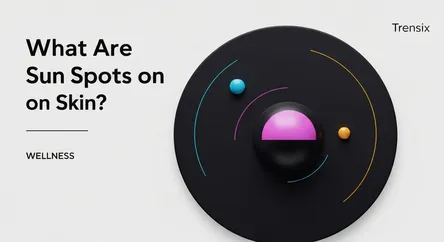Wellness
What Are Sun Spots on Skin?

Learn what sun spots are, why they appear, and how these common signs of sun damage can affect your skin's health and appearance.
What is it?
Sun spots, also known as solar lentigines or age spots, are flat, darkened patches that appear on the skin. They are a direct result of prolonged and cumulative exposure to the sun's ultraviolet (UV) rays. This UV exposure accelerates the production of melanin, the pigment that gives skin its color. Over time, this melanin can clump together in high concentrations, forming the distinct brown spots commonly found on the face, hands, shoulders, and arms—areas that get the most sun. While they can resemble moles, sun spots are harmless and do not become cancerous.
Why is it trending?
The conversation around sun spots is growing within wellness and beauty circles due to a greater awareness of skin health and the visible effects of sun damage. As people become more educated about skincare, there's a stronger focus on achieving an even skin tone and addressing signs of premature aging. The availability of numerous treatments, ranging from over-the-counter creams with vitamin C to professional procedures like laser therapy, chemical peels, and Intense Pulsed Light (IPL), keeps the topic relevant. People are actively seeking both preventative solutions and effective ways to reduce existing hyperpigmentation.
How does it affect people?
While medically benign, sun spots are a significant cosmetic concern for many. Their appearance can lead to self-consciousness about skin clarity and perceived aging, potentially affecting self-esteem. They serve as a clear indicator of past sun damage, often prompting individuals to become more diligent with their sun protection routines. This includes the consistent use of broad-spectrum sunscreen and protective clothing to prevent new spots from forming and to safeguard overall skin health against future UV damage.